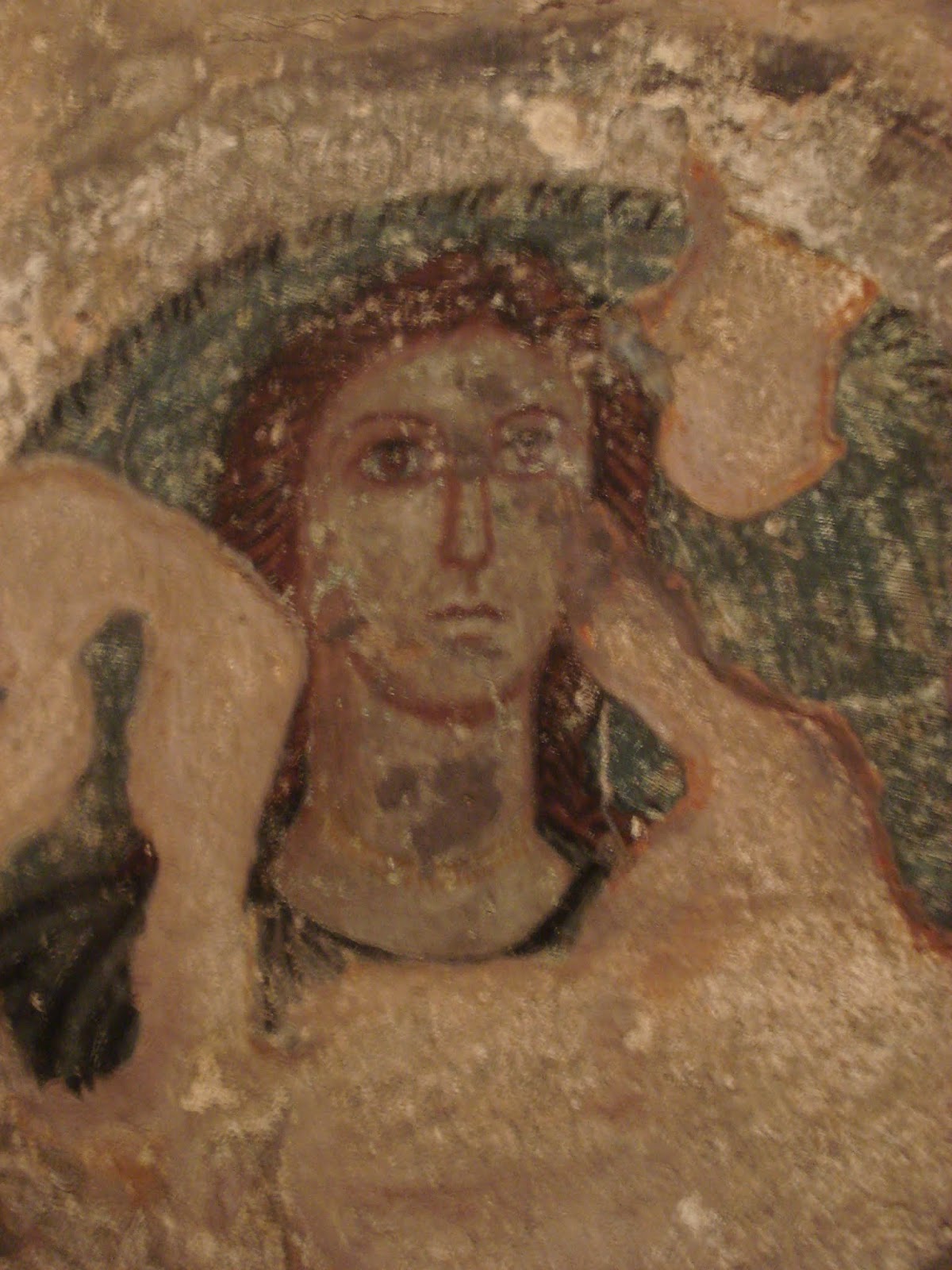Demeter fresco at Panticapaeum/Pantikapaion 1st c. CE
"PANTIKAPAION (Kerch) Bosporus.
Chief city and port of the Kimmerian Bosporus, founded by Greek colonists from Miletos in the late 7th-early 6th c. on the site of an earlier settlement, Panti Kapa, on Mt. Mithridates (Strab. 7.4.4; Plin. HN 4.87). The city became the capital of the Spartocids in the 5th-4th c. Its economic decline in the 4th-3d c. was the result of the Sarmatian conquest of the steppes and the growing competition of Egyptian grain. In 63 B.C. the city was partly destroyed by an earthquake. Raids by the Goths and the Huns furthered its decline, and it was incorporated into the Byzantine state under Justin I in the early 6th c.
The funerary architecture is monumental: a succession of kurgans 4th c. B.C.-2d c. A.D.—the Golden Kurgan, Royal Kurgan, Kul Oba and Melek Cesme—show the complete evolution of this type of tumulus tomb (see below). The Demeter kurgan, which dates from the 1st c. A.D., is much smaller than these and has a well-preserved fresco. In the center of the cupola is a medallion containing the head of Demeter. A frieze on the walls represents Pluto, Demeter, the nymph Calypso, and Hermes. The frescos in still later tombs show mainly battle scenes, gradually giving way to more schematic, geometric designs. The rich grave gifts in the tombs indicate the wealth of the city and its inhabitants."
-The Princeton Encyclopedia of Classical Sites
 |
| A Greek fresco depicting the Goddess Demeter, from Panticapaeum in the ancient Bosporan Kingdom (a client state of the Roman Empire), 1st century CE, Crimea. |
Quote:
http://www.perseus.tufts.edu/hopper/text?doc=Perseus:text:1999.04.0006:entry=pantikapaion


Comments
Post a Comment